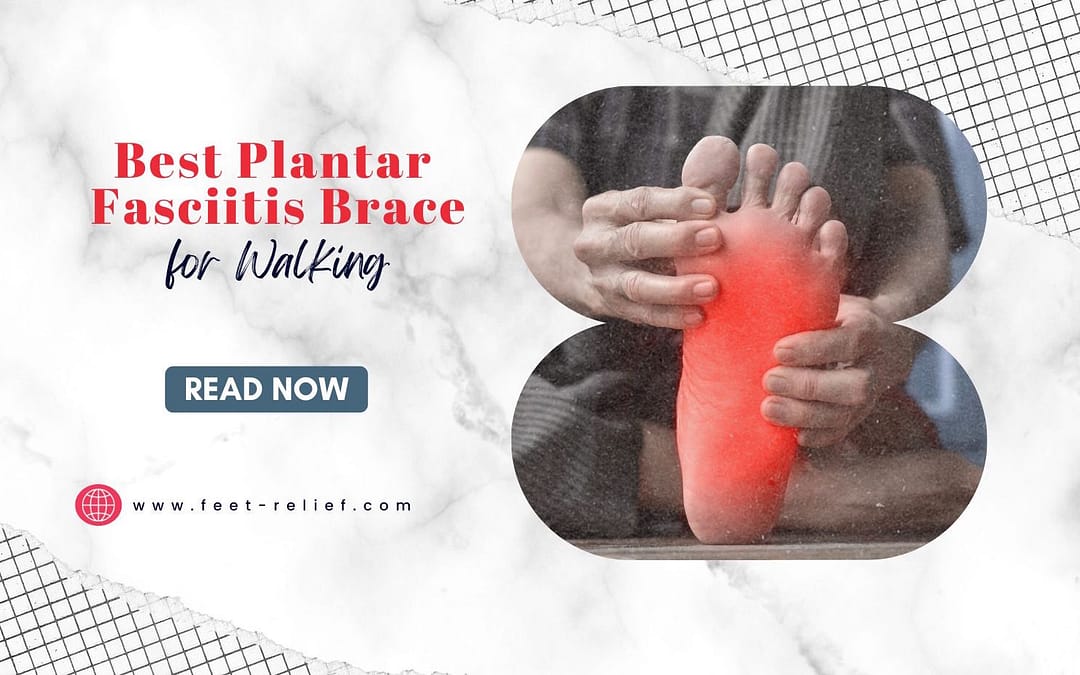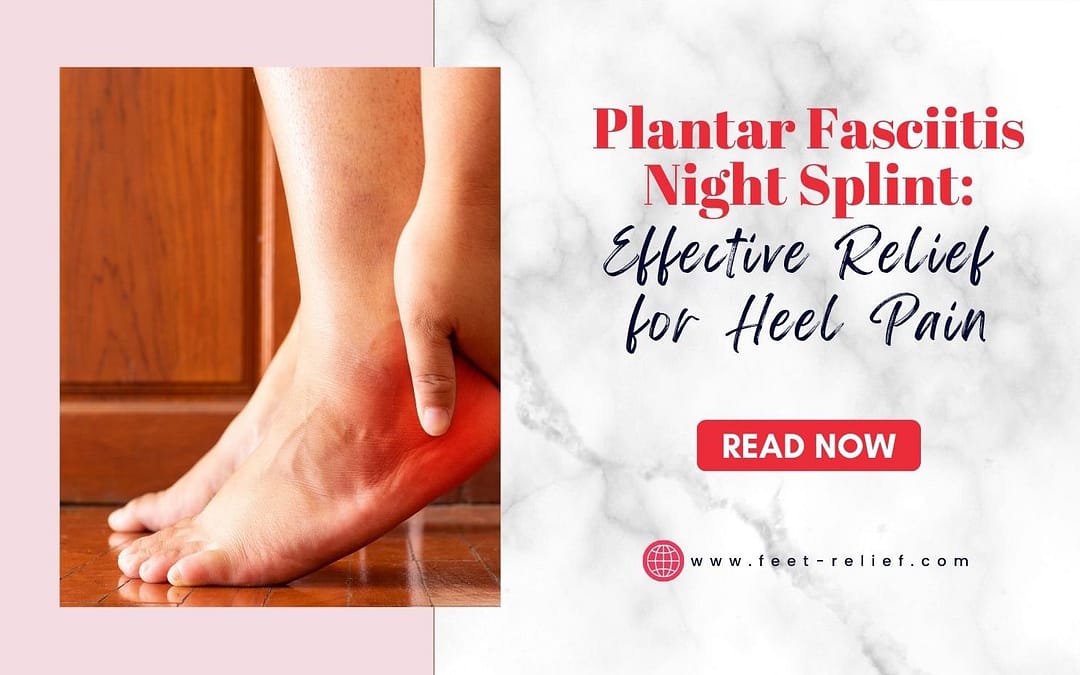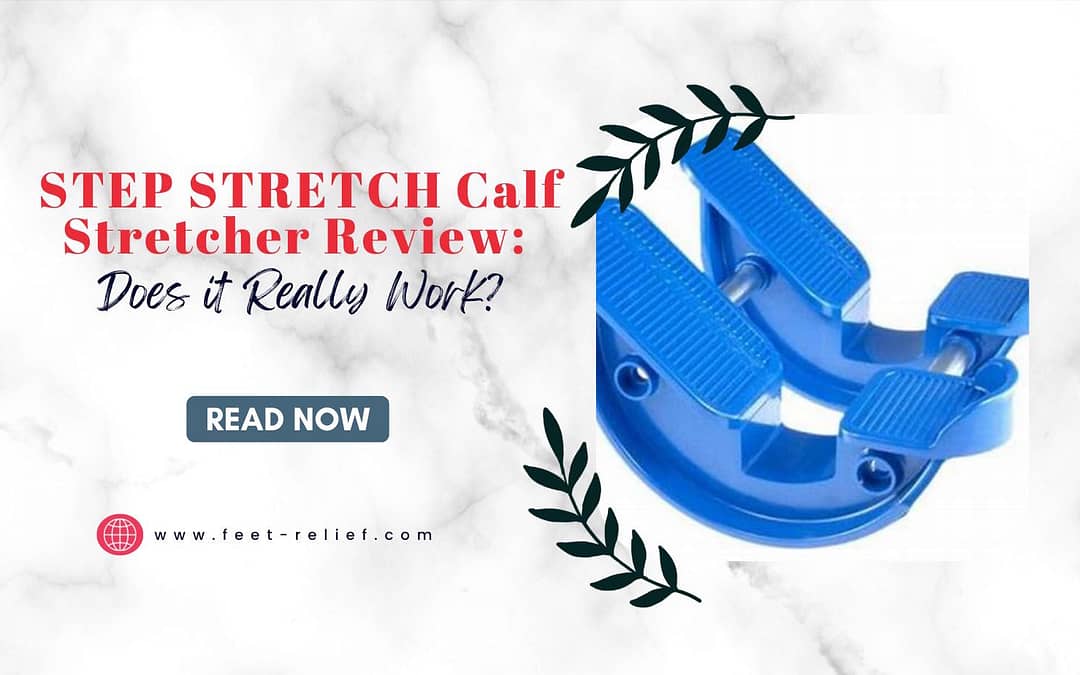
Plantar Fasciitis and Flat Feet
Plantar Fasciitis and Flat Feet: A Comprehensive Guide to Diagnosis and Treatment
Plantar fasciitis is a common cause of heel pain, resulting from inflammation in the plantar fascia, a thick band of tissue running across the bottom of the foot connecting the heel bone to the toes. This condition may often be linked with flat feet, also known as flatfoot or fallen arches, wherein the arches on the inside of the feet flatten when pressure is applied, causing the entire sole of the foot to touch the floor when standing up Mayo Clinic.
People with flat feet are more susceptible to developing plantar fasciitis due to overpronation (inward leaning of the feet while walking) and instability, leading to a higher risk of injury and progressive deformities Orleans Dynamic Foot Clinic. Understanding the relationship between plantar fasciitis and flat feet as well as proper diagnosis, evaluation, and treatment methods can help alleviate pain and improve overall foot health.
Key Takeaways
- Plantar fasciitis is a common cause of heel pain often associated with flat feet.
- Proper diagnosis and evaluation are essential for effective treatment.
- Lifestyle adjustments and various treatment methods can help manage symptoms and improve foot health.

Understanding Plantar Fasciitis and Flat Feet
Anatomy of the Foot
The human foot consists of various bones, tendons, ligaments, and muscles that work together to support our body weight and facilitate movement. The arch of the foot plays an important role in absorbing shock and distributing pressure during activities such as walking, running, and jumping.
The Role of the Fascia
The plantar fascia is a thick band of tissue that runs along the bottom of the foot, connecting the heel to the toes. It provides additional support for the arch and helps in maintaining proper foot mechanics. Inflammation in the plantar fascia, known as plantar fasciitis, is a common cause of heel pain and discomfort.

Differences Between Plantar Fasciitis and Flat Feet
Plantar fasciitis and flat feet are distinct conditions, but they can be related. Flat feet, or flatfoot, is a condition where the arches on the inside of the feet flatten when pressure is put on them, causing the entire soles to touch the floor when standing. This can lead to overpronation, causing stress on the plantar fascia and possibly leading to plantar fasciitis.
On the other hand, plantar fasciitis is primarily caused by inflammation of the plantar fascia tissue. Both conditions can cause discomfort and pain, but they have different underlying causes and may require different treatments.
Common Symptoms
Symptoms of plantar fasciitis include:
- Heel pain, especially in the morning or after periods of inactivity
- Stiffness in the foot
- Swelling at the base of the heel
- Pain that worsens with increased activity
- Chronic heel pain
Symptoms of flat feet include:
- Foot pain, usually in the arch or heel
- Ankle pain or swelling
- Soles of the feet touching the floor when standing
- Feet pointing outward when standing
Causes and Risk Factors
There are several risk factors for both plantar fasciitis and flat feet, including:
- Age: As we age, our tissues tend to lose elasticity, making them more susceptible to inflammation and stress.
- Obesity: Excess weight puts additional pressure on the feet, increasing the strain on the plantar fascia and the risk of developing flat feet.
- Exercise: Activities that involve repetitive stress on the feet, such as running and jumping, can contribute to the development of plantar fasciitis.
- Foot mechanics: People with high arches or flat feet are more likely to develop plantar fasciitis or experience discomfort due to their foot structure.
- Medical conditions: Conditions such as diabetes can increase the risk of developing plantar fasciitis and flat feet.
Treatment approaches for both conditions may involve the use of arch supports, physical therapy, and anti-inflammatory medication to alleviate pain and improve foot mechanics. It is essential to consult a healthcare professional for proper diagnosis and treatment advice.
Diagnosis and Evaluation
Physical Examination
During the diagnosis and evaluation of plantar fasciitis and flat feet, the healthcare provider will perform a physical exam, focusing on the foot structure and areas of tenderness. By examining the location of pain in the foot, the cause can be better determined. The physical exam is essential for differentiating plantar fasciitis from other foot conditions such as flat feet1.
For flat feet, the health care provider may also suggest using arch supports or orthotic devices to help alleviate pain and provide better foot support. These custom-designed devices can be molded to the contours of the feet, though they will not cure flat feet, but are useful in reducing symptoms2.
Imaging Tests
While imaging tests are not routinely needed during the initial stages of diagnosing plantar fasciitis, they can be useful in confirming the diagnosis in cases where the condition is not improving with treatment or in ruling out other possible causes of heel pain3.
Common imaging tests for diagnosing plantar fasciitis and flat feet include:
- X-ray: X-rays can help visualize the foot structure and may reveal any abnormalities or stress fractures that might be contributing to the pain.
- MRI: Magnetic resonance imaging (MRI) provides a more detailed view of the soft tissues in the foot, including the plantar fascia. It can help identify inflammation, tears, and other structural problems.
- Ultrasound: Ultrasound imaging may also be used for visualizing soft tissue structures in the foot and can be helpful in assessing the thickness and integrity of the plantar fascia4.
In conclusion, the diagnosis and evaluation of plantar fasciitis and flat feet involve a thorough physical examination and the use of imaging tests as needed. The healthcare provider will carefully assess the patient’s foot structure, looking for signs of inflammation, abnormality, or injury to determine the appropriate course of treatment.

Treatment Methods
Non-Invasive Treatments
To address symptoms related to plantar fasciitis and flat feet, several non-invasive treatments can be applied. For both conditions, implementing rest is crucial to alleviate pain and give the affected muscles time to recover. Applying icing on the affected area can help reduce inflammation and discomfort. Engaging in stretching exercises targeting the plantar fascia, Achilles tendon, and calf muscles can improve flexibility and reduce tension in these areas.
Physical therapy can be beneficial, as a therapist can demonstrate specific exercises that target the issue and provide techniques for long-term management, such as using athletic taping to support the bottom of the foot 1. Additionally, patients with flat feet can benefit from arch supports or orthotics (custom-designed arch supports) to reduce symptoms and provide cushioning and support for the foot2. Another option is the use of night splints to help stretch the plantar fascia and keep it in a better position overnight1.
Medications and Injections
Pain relief and management can be achieved through over-the-counter (OTC) anti-inflammatory medications, like ibuprofen3. Prescription nonsteroidal anti-inflammatory drugs (NSAIDs) can also be considered if OTC options are insufficient. In more severe cases, physicians may recommend corticosteroid injections to reduce inflammation and alleviate pain in the plantar fascia4. However, these injections should be limited and carefully administered, as they can cause weakening of the plantar fascia and fat pad atrophy.
Surgery and Other Procedures
When non-invasive treatments do not provide significant relief, other procedures may be considered. Gastrocnemius recession is a surgical procedure that addresses tight calf muscles by lengthening them, ultimately reducing strain on the plantar fascia5. Another option is the Tenex procedure, involving a minimally invasive approach that targets and removes scar tissue from the plantar fascia area3.
Other advanced procedures, like extracorporeal shock wave therapy and radiofrequency ablation, may be suggested based on the severity of the condition and response to conservative treatments5. In any case, these options should be discussed with a healthcare professional who can thoroughly evaluate the individual’s condition and recommend the most appropriate course of action.

Lifestyle Adjustments
Activity and Exercise Modifications
In dealing with plantar fasciitis and flat feet, it’s essential to modify activities and exercises to reduce strain on the plantar fascia. Incorporate low-impact exercises like swimming and cycling to minimize stress on the feet while maintaining aerobic fitness. For runners, it’s important to gradually increase the intensity and duration of their runs. Additionally, performing stretching and strengthening exercises can help improve foot flexibility and stability.
Workplace and Home Adaptations
Making adaptations to the workspace and home environment can help alleviate discomfort and promote healing in individuals with plantar fasciitis and flat feet. Ensure that there are proper mats or cushioned surfaces in places where one has to stand for extended periods. Taking breaks and sitting down periodically can also help reduce the pressure on the feet.
Footwear Recommendations
Choosing the right footwear plays a significant role in managing plantar fasciitis and flat feet. Opt for supportive shoes with cushioned soles, arch support, and a slightly elevated heel to alleviate pressure on the plantar fascia. Custom-designed orthotic devices may be recommended by healthcare providers for better contouring and support. Avoid wearing unsupportive footwear like flip-flops, flat sandals, and high heels.
Weight Management
Maintaining a healthy weight is essential in preventing and managing plantar fasciitis and flat feet, as obesity and being overweight can place additional strain on the feet. Adopting a balanced diet and incorporating moderate physical activity can help achieve and maintain optimal weight levels, ultimately contributing to better foot health.
Regular Follow-Ups
Finally, make sure to have regular follow-ups with a healthcare provider to monitor progress and ensure the proper management of plantar fasciitis and flat feet. Healthcare providers can assess the efficiency of the lifestyle adjustments, recommend necessary changes, and provide guidance on further treatments if needed. Regular evaluations also help detect and address any potential complications early on.

Complications and Prognosis
Plantar fasciitis is a common cause of heel pain, which results from the inflammation of the plantar fascia, a thick ligament connecting the heel bone to the toes. Flat feet can be a risk factor for developing plantar fasciitis, as the absence of arches in the feet may put extra strain on the plantar fascia.
One of the complications associated with plantar fasciitis is the tearing of the ligament. Tears in the plantar fascia can not only aggravate the heel pain but may also lead to swelling, redness, and sometimes even nerve irritation. Prolonged untreated plantar fasciitis may result in the development of heel spurs, which are bony protrusions that can aggravate the pain.
Untreated flat feet can also lead to complications such as strain on the lower leg muscles, tendon inflammation, and swelling in the ankle and foot. In some cases, when flat feet are caused by tibialis posterior tendon dysfunction, it might predispose individuals to the risk of tendon rupture or injury.
Individuals with rheumatoid arthritis are at an increased risk of experiencing both plantar fasciitis and flat feet. The condition can accelerate the weakening of foot muscles and ligaments, exacerbating the symptoms and complications associated with flat feet and plantar fasciitis such as pain and swelling.
The prognosis for both plantar fasciitis and flat feet is generally favorable with appropriate treatment options. For plantar fasciitis, interventions such as stretches, footwear modifications, and orthotics can be effective in reducing pain and inflammation. In more severe cases, additional treatments like physical therapy, braces, and even corticosteroid injections or surgery might be necessary. For flat feet, supportive shoes, custom-designed orthotics, and physical therapy may help alleviate the discomfort and reduce the risk of injury.
In conclusion, plantar fasciitis and flat feet may result in complications if left untreated. However, with proper care and management, most individuals can continue to lead an active life without significant discomfort or long-term issues.
Frequently Asked Questions
Is plantar fasciitis more common in flat feet?
Yes, plantar fasciitis is more common in individuals with flat feet. Flat feet can cause strain on the plantar fascia, a thick band of tissue that runs across the bottom of each foot, connecting the heel bone to the toes ^(source). This strain can lead to inflammation and pain, commonly known as plantar fasciitis.
What are the best insoles for flat feet and plantar fasciitis?
The best insoles for flat feet and plantar fasciitis are those that provide proper arch support, cushioning, and stability. It is crucial to choose insoles designed specifically for flat feet and plantar fasciitis to ensure comfort and pain relief. You may want to consult a podiatrist for personalized recommendations based on your specific needs.
How do you treat plantar fasciitis in flat feet?
Treating plantar fasciitis in flat feet typically involves a combination of conservative measures such as stretching exercises, ice, anti-inflammatory medications, and wearing supportive shoes with proper insoles ^(source). In some cases, physical therapy or custom orthotics may also be recommended. If conservative treatments fail, your doctor may consider other options like corticosteroid injections or even surgery.
Does plantar fasciitis require high arch support?
Plantar fasciitis often benefits from arch support, but the type of support needed depends on the individual’s foot structure. For people with flat feet, it is essential to have proper arch support that is not too high or too low ^(source). A supportive insole with a moderate arch can help alleviate pressure on the plantar fascia and reduce heel pain.
Do people with flat feet need additional arch support?
People with flat feet often need additional arch support, as their feet may lack the natural support provided by an arch. Providing proper arch support can help distribute pressure more evenly across the foot, reducing the risk of developing or aggravating conditions like plantar fasciitis ^(source).
Is plantar fasciitis more common with high or low arches?
Plantar fasciitis is more commonly associated with low arches or flat feet because it places more strain on the plantar fascia ^(source). However, individuals with high arches, known as cavus feet, can also be prone to plantar fasciitis due to increased pressure on the heel and ball of the foot. In both cases, proper footwear with appropriate arch support can help prevent and alleviate symptoms.
Footnotes
- Plantar fasciitis – Diagnosis and treatment – Mayo Clinic ↩ ↩2 ↩3
- Flatfeet – Diagnosis and treatment – Mayo Clinic ↩ ↩2
- Diagnosis and Treatment of Plantar Fasciitis | AAFP ↩ ↩2 ↩3
- Plantar Fasciitis: Symptoms, Causes & Treatment Options – Cleveland Clinic ↩ ↩2
- https://www.verywellhealth.com/plantar-fasciitis-treatment-7484517 ↩ ↩2

























